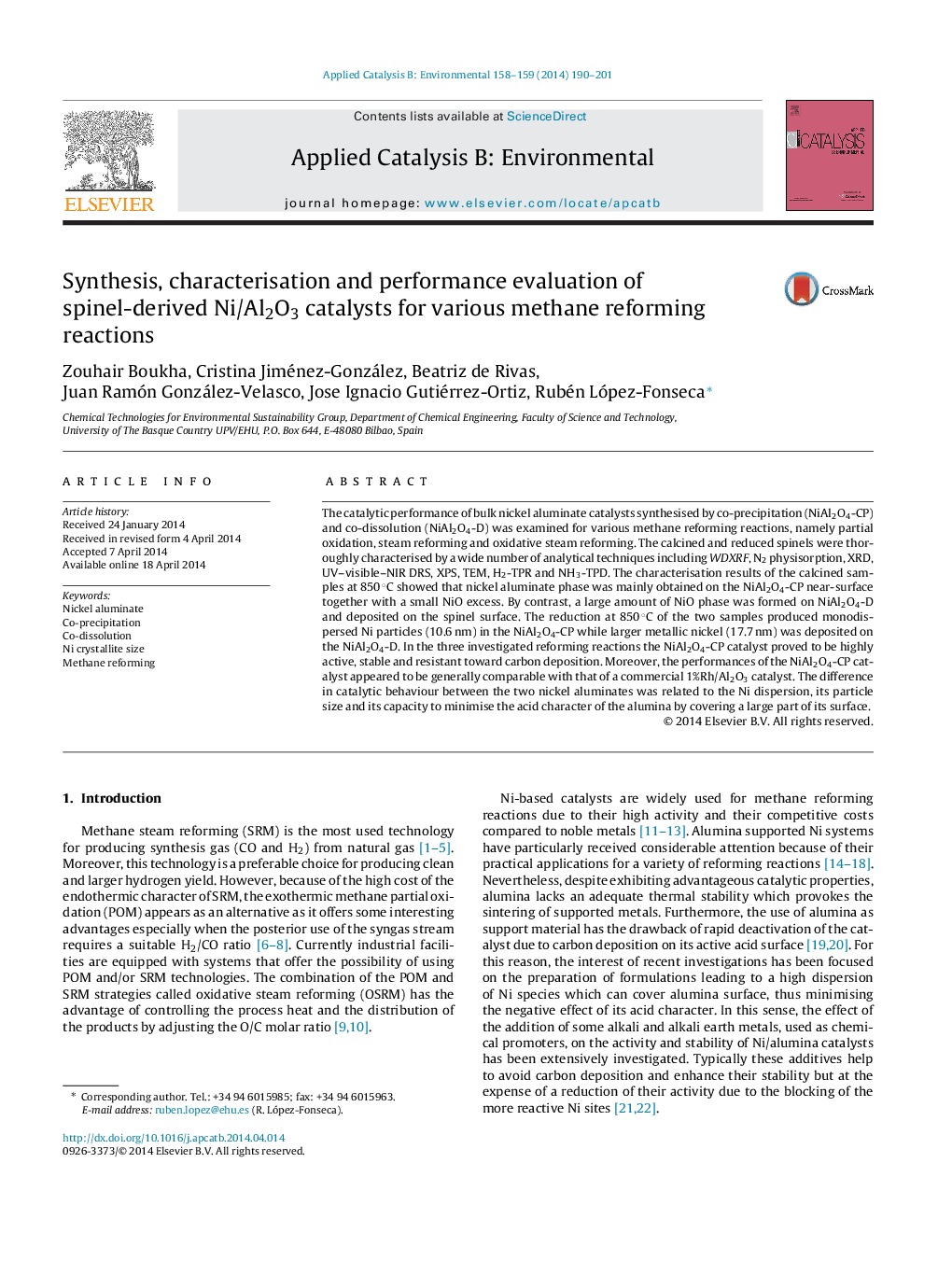| Article ID | Journal | Published Year | Pages | File Type |
|---|---|---|---|---|
| 45870 | Applied Catalysis B: Environmental | 2014 | 12 Pages |
•Nickel aluminate catalysts were prepared by co-precipitation and co-dissolution.•The influence of the preparation method on the Ni distribution was discussed.•Well dispersed and homogeneous Ni was obtained on the co-precipitated NiAl2O4.•This sample exhibited a high activity for various methane reforming reactions.•The catalytic behaviour was controlled by Ni particle size and surface acid density.
The catalytic performance of bulk nickel aluminate catalysts synthesised by co-precipitation (NiAl2O4-CP) and co-dissolution (NiAl2O4-D) was examined for various methane reforming reactions, namely partial oxidation, steam reforming and oxidative steam reforming. The calcined and reduced spinels were thoroughly characterised by a wide number of analytical techniques including WDXRF, N2 physisorption, XRD, UV–visible–NIR DRS, XPS, TEM, H2-TPR and NH3-TPD. The characterisation results of the calcined samples at 850 °C showed that nickel aluminate phase was mainly obtained on the NiAl2O4-CP near-surface together with a small NiO excess. By contrast, a large amount of NiO phase was formed on NiAl2O4-D and deposited on the spinel surface. The reduction at 850 °C of the two samples produced monodispersed Ni particles (10.6 nm) in the NiAl2O4-CP while larger metallic nickel (17.7 nm) was deposited on the NiAl2O4-D. In the three investigated reforming reactions the NiAl2O4-CP catalyst proved to be highly active, stable and resistant toward carbon deposition. Moreover, the performances of the NiAl2O4-CP catalyst appeared to be generally comparable with that of a commercial 1%Rh/Al2O3 catalyst. The difference in catalytic behaviour between the two nickel aluminates was related to the Ni dispersion, its particle size and its capacity to minimise the acid character of the alumina by covering a large part of its surface.
Graphical abstractFigure optionsDownload full-size imageDownload as PowerPoint slide
